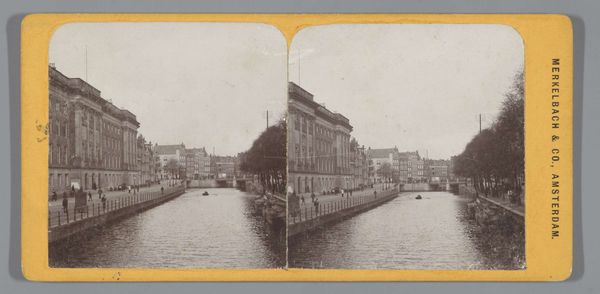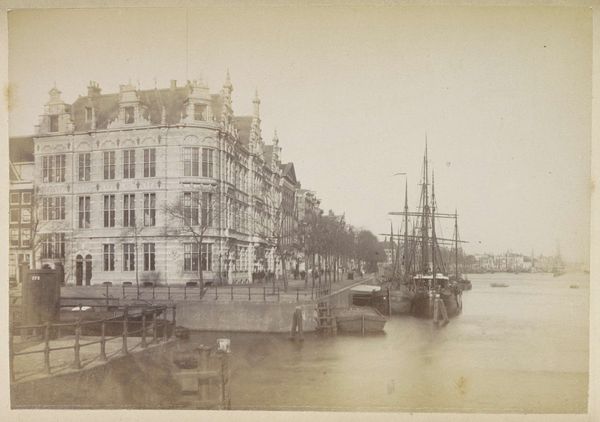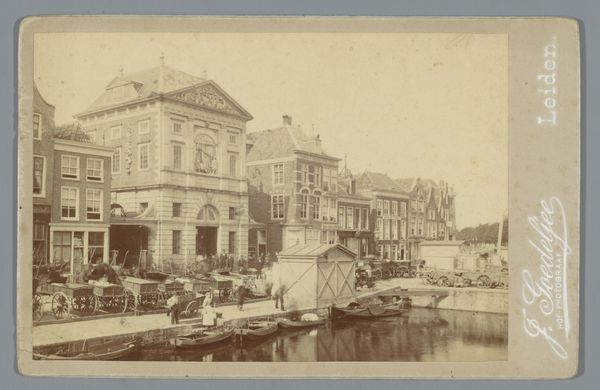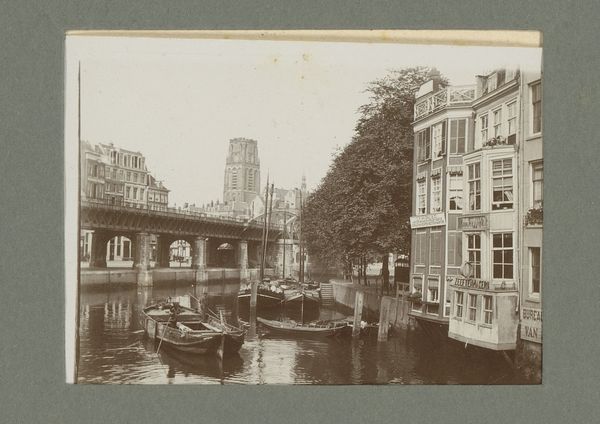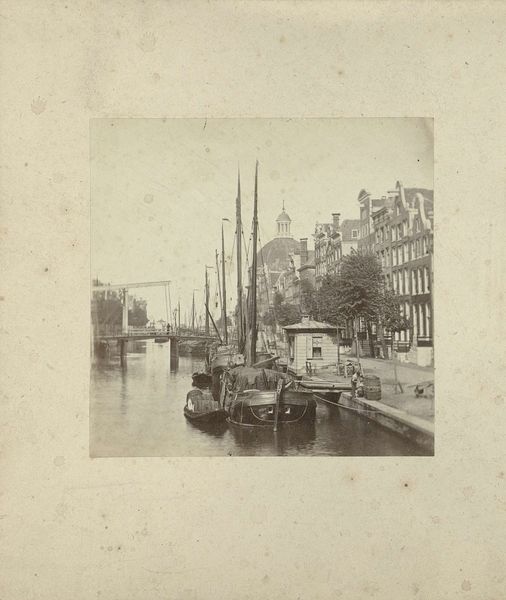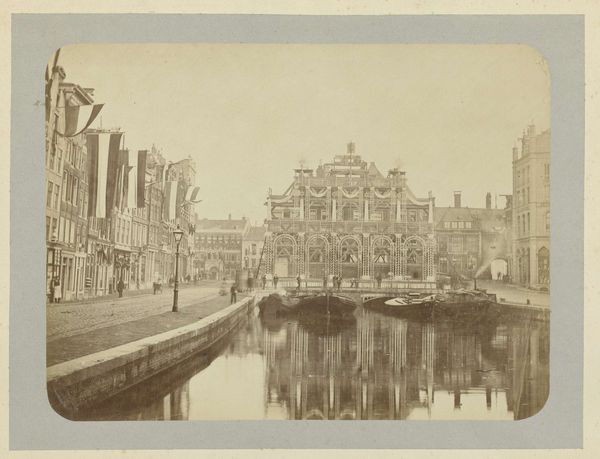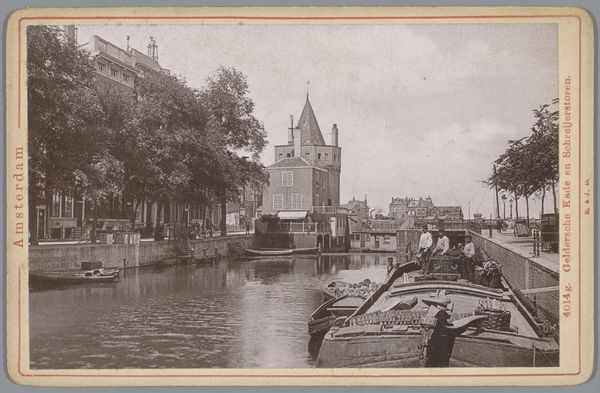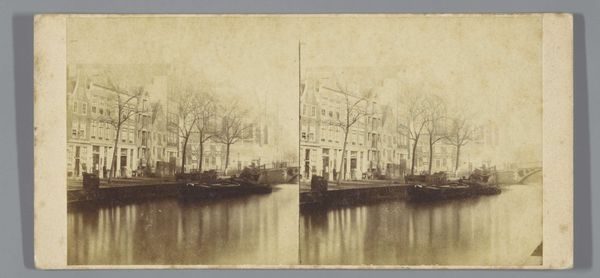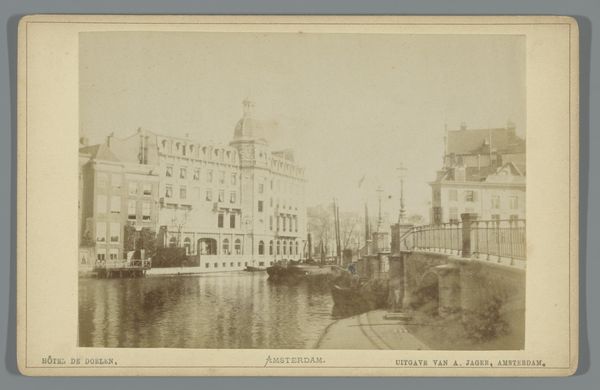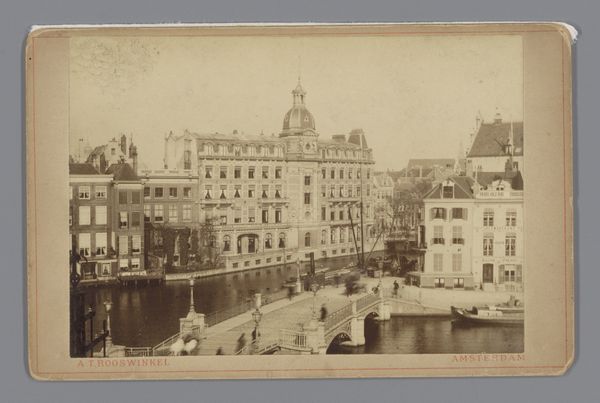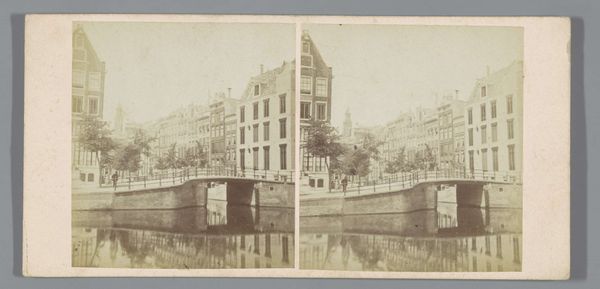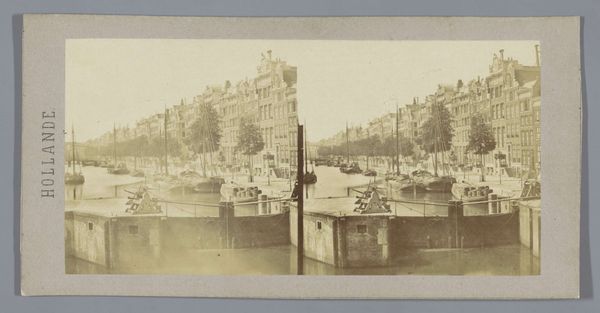
De IJgracht, de tegenwoordige Prins Hendrikkade, gezien in westelijke richting c. 1880 - 1885
0:00
0:00
print, photography, gelatin-silver-print
#
pictorialism
# print
#
photography
#
gelatin-silver-print
#
cityscape
#
realism
Dimensions: height 97 mm, width 152 mm, height 108 mm, width 167 mm
Copyright: Rijks Museum: Open Domain
Editor: This photograph, taken by P. Oosterhuis around 1880-1885, shows the IJgracht in Amsterdam, now Prins Hendrikkade. It's a gelatin-silver print and creates a very serene, almost dreamlike vision of the cityscape. What strikes me is the way it romanticizes what would have been a bustling port. How do you interpret this work, especially considering its historical context? Curator: That's a perceptive observation. Beyond the immediate visual appeal, consider the context in which Oosterhuis was working. Photography in the late 19th century was rapidly evolving, grappling with its identity as both a documentarian and an art form. This image, with its soft focus and atmospheric perspective, reveals Pictorialism’s influence, a movement striving to elevate photography to the level of painting. Oosterhuis isn't just recording a scene; he's actively shaping a visual narrative about Amsterdam. Notice how the composition downplays any industrial grit. The perspective chosen to portray this narrative plays a major role, don't you think? Editor: Absolutely. By focusing on the aesthetic qualities, the artist seems to be constructing a particular image of Amsterdam for public consumption. The framing certainly filters out aspects of the daily grind associated with maritime trade. Were photographs like these part of constructing a specific national or civic identity? Curator: Precisely. Photography became a tool for civic self-promotion, presenting a carefully curated view of the city to both its inhabitants and the wider world. Images like this reinforced a sense of history, progress, and civic pride. Consider how the built environment – the architecture – contrasts with the more ‘primitive’ vessels at port. These visual choices contributed to an evolving understanding of the Dutch national character, carefully managing how the nation was perceived internally and projected externally. How else might such images contribute to social policy? Editor: It's fascinating to see how a seemingly straightforward cityscape photograph can be unpacked to reveal so much about the cultural and political landscape of the time. The way that these elements contribute towards defining civic or national image. Curator: Indeed. It reminds us that photographs, even those seemingly objective, are always mediated representations, shaped by the photographer's vision and the societal forces at play. I now have an image of Oosterhuis's impact.
Comments
No comments
Be the first to comment and join the conversation on the ultimate creative platform.

